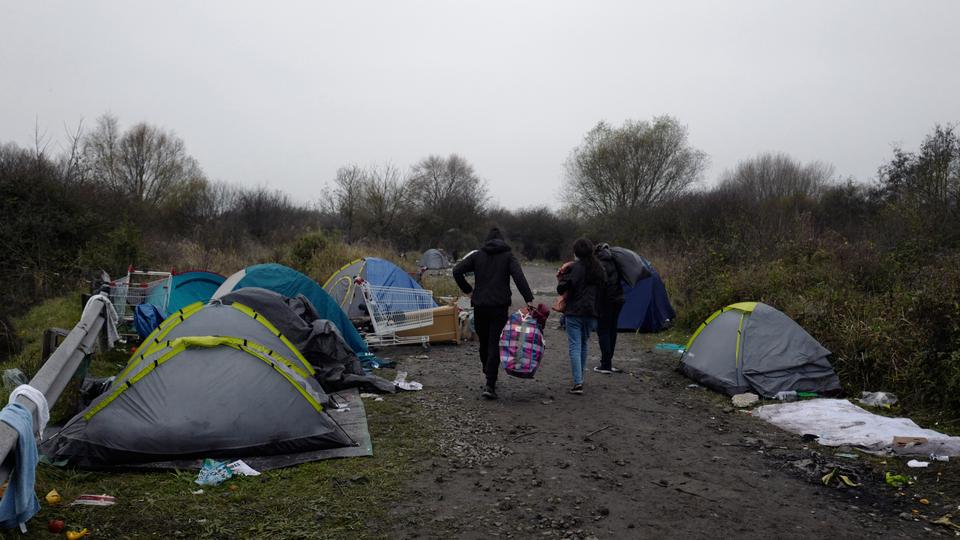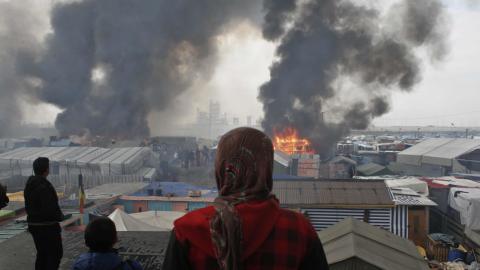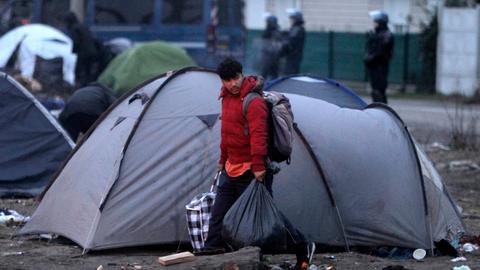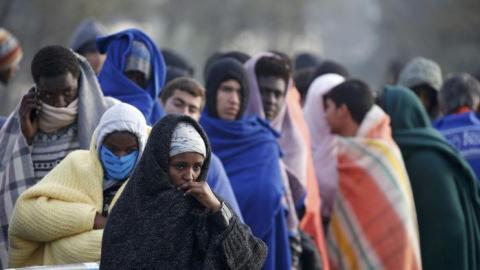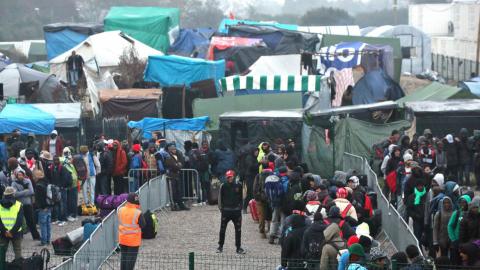Sierra Clark, The Record-Eagle, Traverse City, Mich.
Sat, November 27, 2021
Nov. 27—For nearly three decades, November has been recognized as Native American Heritage Month — a national time for observance, and celebration of the rich and diverse cultures, histories, and contributions of the original peoples.
The month of recognition draws its roots to a number of historical figures and Indigenous communities across the nation that repeatedly petitioned for commemoration that honored the storied legacy of tribes.
Since 1990, a joint resolution passed by Congress and signed by the president designated November as National American Indian Heritage month. Similar proclamations with a variety of titles have been issued over the years from former sitting presidents, including the rebranded, more appropriately named NAHM.
Though NAHM is more of a symbolic gesture by the U.S. government, I do believe that it's a good opportunity for representation on the local level.
But the amount of extraction that comes during this time of year is enough to burn out many Indigenous people, me included.
It is not quite clear why November was chosen to be NAHM, the period between Indigneous Peoples' Day (October 11 this year) and Thanksgiving, is a time when Native American speakers, like me, are called upon to share an "Indigneous perspective."
It's important to point out that the perspective to which I refer is Odawa, because my position in journalism is different from my lived experiences as a Native American in Michigan.
From personal observation and perspective, these requests come as a constant stream of questions and demands for (free) emotional labor to educate others using our resources, that include time and experience, whether professional or personal.
Most of the time the requests are well meaning, but they always come with a colonial pressure to be "extra Anishinaabe" this time of year.
I am Kitchi Wiikwedongsing Odawa every day of the year, and our histories, culture, and traditions are valid everyday of the year as well.
But Anishinaabek identities are more than stories of colonial trauma and pain.
As an Anshinaabe, I am instructed to think of the next seven generations. My decisions to write, or speak on issues come from a deep-cultural drive to improve the world for our children, and future generations.
And more representation, discussions, and education of Anishinaabek histories and contemporary lives are important for our community.
But Indigenous people do not owe substantiation of our contemporary existence by breaking them into digestible pieces about our traumas, and lived experiences.
There is more beauty in being Odawa Anishinaabe than is visible through that colonialist lens.
Native Americans in the U.S. are presently surviving more than 500 years of genocide, and more than 250 years of colonial government policies aimed to annihilate us, and what we hold sacred.
Our past and contemporary lives are intertwined with the complex, and collective histories of what is now the United States. And our existence extends beyond NAHM and more importantly beyond the country that built itself on top of our ancestors and sacred sites.
Our stories and our voices do not need to be amplified only for one month of the year.
They deserve the respect to be commonly known on the lands they come from, and represented in a way that is honest and truthful.
Listening to just me should not make up for any lack of understanding and absence of Anishinaabek culture, traditions, and histories.
Anishinaabek communities are full of doctors, lawyers, philosophers, teachers, farmers, writers, and land and water protectors. We are business owners, students, parents, and come from the land.
Mine is only one voice, and certainly not the only one, you should hear representing Indigenous people throughout the year.
Sierra Clark is an Indigenous affairs reporter for Traverse City Record-Eagle. Her reporting is made possible through a partnership between the Record-Eagle and the journalism service program Report for America. Go to www.record-eagle.com/RFA to support this and other work by RFA reporters in the Record-Eagle newsroom.
A first step
Jennifer Levin, The Santa Fe New Mexican
Fri, November 26, 2021,
Nov. 26—Sam Brownback wants the United States government to repair its relationship with Native Americans, an act which he believes starts with a formal apology from the president. The former governor of Kansas and U.S. senator spent five years trying to get an official apology passed through legislation and in 2009 succeeded in getting it added as an amendment to an appropriations bill. That the government should and will apologize is the "law of the land," Brownback says, but nothing has actually happened. Neither Barack Obama nor Donald Trump held a ceremony in the Rose Garden with tribal leaders, as he'd hoped.
Now, he says it's up to President Biden to make the apology official. To shine a light on the issue, Brownback is producing a short, three-part documentary called The Apology, the first two installments of which can be viewed at theapologynow.com.
In The Apology, Brownback discusses his deep feelings of guilt and remorse around the government's treatment of Native Americans, which includes broken treaties, stolen land, and massacres. Negiel Bigpond (Yuchi) is the apostle of Morning Star Church of All Nations in Oklahoma. He worked with Brownback on the language of the apology in the appropriations bill and co-produced the documentary. He would like an apology specifically for the horror of Indian boarding schools, where Indigenous children were "separated from their families, made to cut their hair and stop speaking their language, and were dressed in odd clothes," he says. "They were somewhat mistreated, which left ill feelings."
The Apology was directed by Matt Lockett and co-written by Lockett and Ben Stamper. The latter is also credited with the gorgeous cinematography. In the documentary, Brownback explains that his passion for the apology stems to a day when as a young man, he was standing on his farmland and was overcome by a feeling of death, which led him to think about the Trail of Tears and the Indian Removal Act of 1830. Eventually, he came to believe that an apology from the government was the only way to "lance the boil so that the healing can begin."
Brownback makes it clear that the apology isn't about giving land back to tribes or any kind of financial reparations. This is about something deeper, he says. "There's a repentance piece to it. There's a process, and you can't skip steps. That's really what we're talking about for a nation to do, to heal. We've done other things wrong, as a government, but this is a really big one."
Bigpond says that the apology is just a first step. "I'm hoping that it will release spiritual healing to our people. When it comes to land and things of that nature, that's in the treaties. Those still exist, and the United States government will still have to deal with those treaties, as well as the tribes."
Jennifer Levin, The Santa Fe New Mexican
Fri, November 26, 2021,
Nov. 26—Sam Brownback wants the United States government to repair its relationship with Native Americans, an act which he believes starts with a formal apology from the president. The former governor of Kansas and U.S. senator spent five years trying to get an official apology passed through legislation and in 2009 succeeded in getting it added as an amendment to an appropriations bill. That the government should and will apologize is the "law of the land," Brownback says, but nothing has actually happened. Neither Barack Obama nor Donald Trump held a ceremony in the Rose Garden with tribal leaders, as he'd hoped.
Now, he says it's up to President Biden to make the apology official. To shine a light on the issue, Brownback is producing a short, three-part documentary called The Apology, the first two installments of which can be viewed at theapologynow.com.
In The Apology, Brownback discusses his deep feelings of guilt and remorse around the government's treatment of Native Americans, which includes broken treaties, stolen land, and massacres. Negiel Bigpond (Yuchi) is the apostle of Morning Star Church of All Nations in Oklahoma. He worked with Brownback on the language of the apology in the appropriations bill and co-produced the documentary. He would like an apology specifically for the horror of Indian boarding schools, where Indigenous children were "separated from their families, made to cut their hair and stop speaking their language, and were dressed in odd clothes," he says. "They were somewhat mistreated, which left ill feelings."
The Apology was directed by Matt Lockett and co-written by Lockett and Ben Stamper. The latter is also credited with the gorgeous cinematography. In the documentary, Brownback explains that his passion for the apology stems to a day when as a young man, he was standing on his farmland and was overcome by a feeling of death, which led him to think about the Trail of Tears and the Indian Removal Act of 1830. Eventually, he came to believe that an apology from the government was the only way to "lance the boil so that the healing can begin."
Brownback makes it clear that the apology isn't about giving land back to tribes or any kind of financial reparations. This is about something deeper, he says. "There's a repentance piece to it. There's a process, and you can't skip steps. That's really what we're talking about for a nation to do, to heal. We've done other things wrong, as a government, but this is a really big one."
Bigpond says that the apology is just a first step. "I'm hoping that it will release spiritual healing to our people. When it comes to land and things of that nature, that's in the treaties. Those still exist, and the United States government will still have to deal with those treaties, as well as the tribes."





